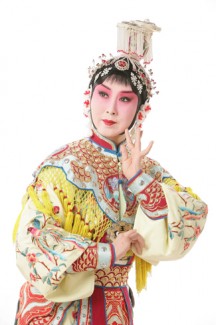Peking Opera is one of the Chinese traditional operas, found in Beijing, with 150 years of history. It is based on the “Hui opera” and “Han opera” and absorbed the advantage and features of the Kunqu opera and Shaanxi opera, then developed and formed gradually over time.

Photo from Binghamton Confucius Institute | Courtesy
Beijing Opera, also known as “pihuang” (yellow skin) because it is from “xipi” and “erhuang” composed of two basic tones.

Peking Opera is China’s cultural legacy, the actors interpret it vividly, Hiromi momentum, making it representative of modern Chinese drama.
Beijing Opera is a comprehensive performing art. Using namely singing, talking, expressive gestures and fighting to represent those thoughts and feelings such as joy, anger, dirge, surprise, fear and sadness.
The opera can be divided into four roles: Sheng, Dan, Jing and Chou.
Sheng, the male lead, plays the role of an ordinary man. Dan, the female lead, plays the role of an ordinary woman. Jing, the painted face, stands for men with distinctly different looks and characters, and Chou, the clown, plays the role of a humorous or an evil man.
People have faithfulness points, beauty and ugliness points and good and evil points, each vivid and lifelike.
The main theme of the opera is usually from history of political and military struggle, but the story is mostly from fiction. There are a lot of fans around the country that love to indulge in a touching story.
Peking Opera is a synthesis of art. It shows the audience the excellence of Chinese art. In recent years, Beijing opera has attempted numerous reforms in response to sagging audience numbers. These reforms, which include improving performance quality, adapting new performance elements and performing new and original plays, have been met with mixed success.
Some Western works have been adopted as new plays, but a lack of funding and an adverse political climate have left Beijing Opera’s fate uncertain as the form enters the 21st century.
Yiran Zhu can be reached at [email protected]

Photo from Binghamton Confucius Institute | Courtesy